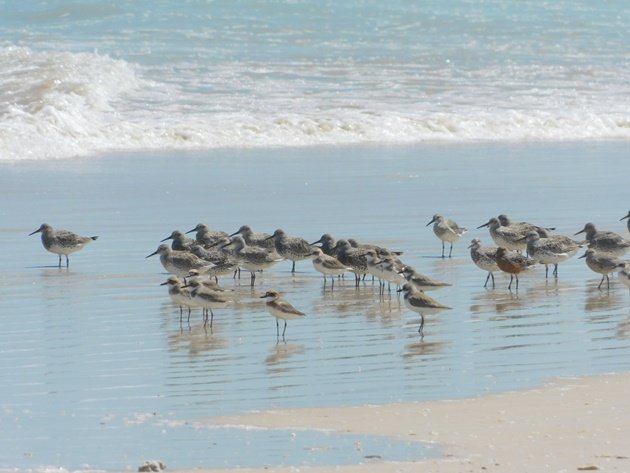
So, here we are in the second week of March and the start of migration from the shores around Broome has started! The first species to leave our shores each year are the Greater Sand Plover. Migration will continue each evening now until close to the end of May with the last species to depart for the Northern Hemisphere being the Red Knot. There is a table on this website showing the departure dates.
With the full moon this week we have had some very big tides with vertical movements over ten metres. On the highest tides the shorebirds had nowhere to roost on the beaches and had to head inland for a few hours. Even before the tides got very big there were good numbers of shorebirds on Cable Beach. At this time of year you can observe the changing plumage on the shorebirds. Due to the fact that the weather is so hot and humid there are very few people on the beach. There are a few raptors around to disturb the shorebirds at roost, but generally you can enjoy them standing and feeding in the shallows.
The best time to see the shorebirds is after high tide. They are more relaxed and feed as the tide recedes at this time of year. The Great Knot always seem to be the first to start feeding when the tide turns. The Red Knot mingle with the Great Knot and it is at this time of year that their different plumage becomes more apparent. It is less easy to overlook Red Knot from now until they leave. There are both sub-species of Red Knot (piersma and rogersi) here and it becomes more apparent as they change their plumage. The Greater Sand Plovers prefer to be at the back of the flock among the terns.
Red Knot, Great Knot and Greater Sand Plover
The variation in plumage is apparent in the photos above. Some of the Great Knot have much darker fronts and some russet in the feathers on their backs. The Red Knot have varying degrees of ‘red” or very little at all. The Red Knot are a smaller species than the Great Knot, but they also appear to get a lot “fatter/rounder” prior to migration. A Red Knot running towards you as it gets caught in a bigger than predicted wave has a very distinct breast colour as you can see below! The Great Knot to the right also has an almost black breast. This pair of shorebirds are progressing well with their breeding plumage.
Red Knot and Great Knot showing breeding plumage
Cable Beach was covered in jellyfish for a few days. Thankfully they mostly went back to sea on the next tide. If they don’t then there can be quite a fishy smell! They were mostly similar to the one below and up to 30cm across.
Jellyfish
Many of us are no doubt being restricted on where we travel at the moment. Hopefully we can continue to bird when and where we want to locally. If we are told to “self-isolate” then hopefully we all have birds coming into our gardens to enjoy. These shorebirds will be free to travel and we wish them well on their journey north to breed over coming weeks.

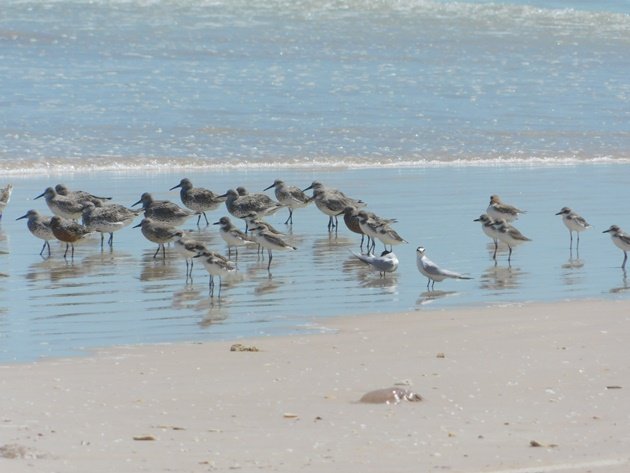
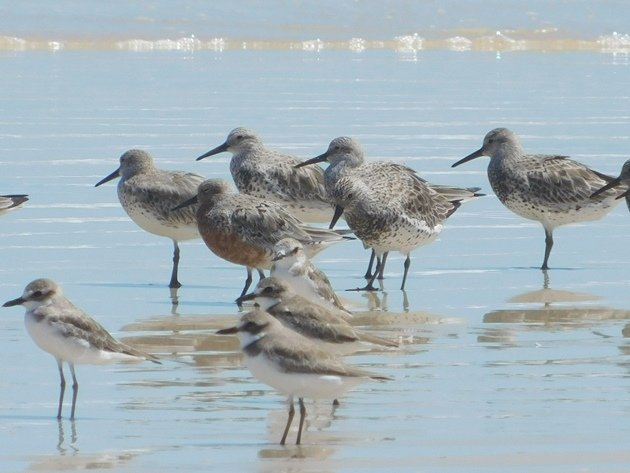
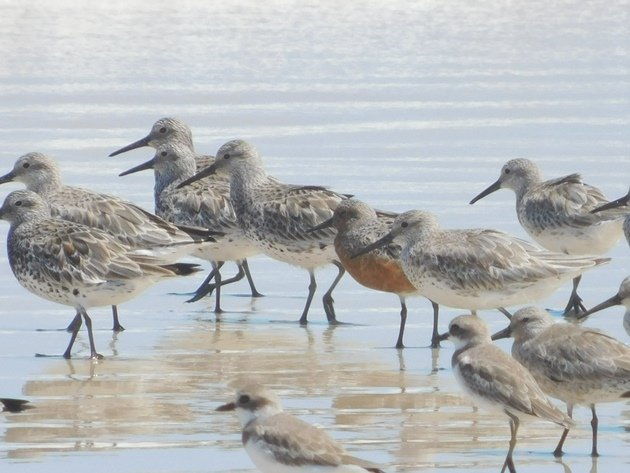
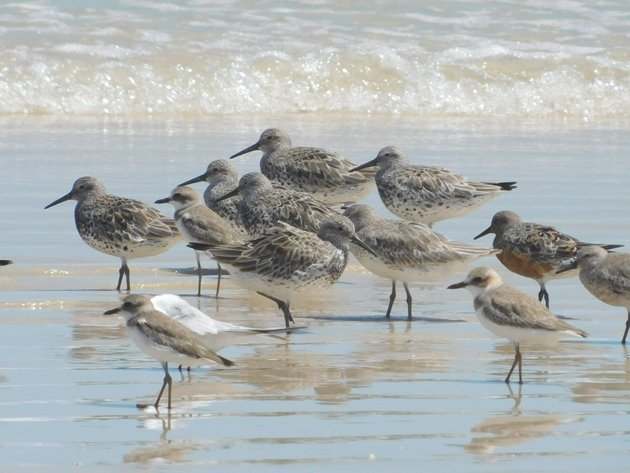
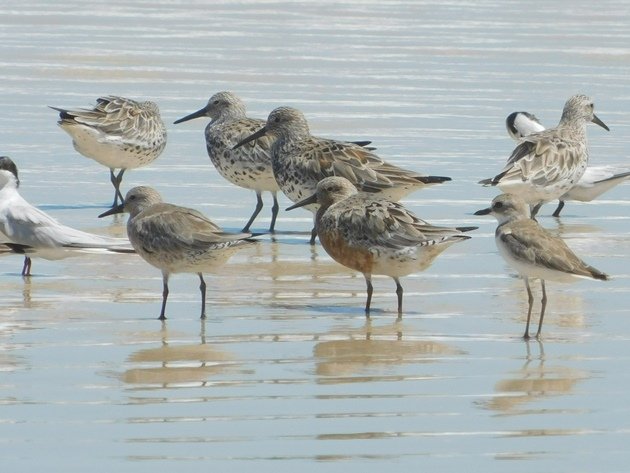
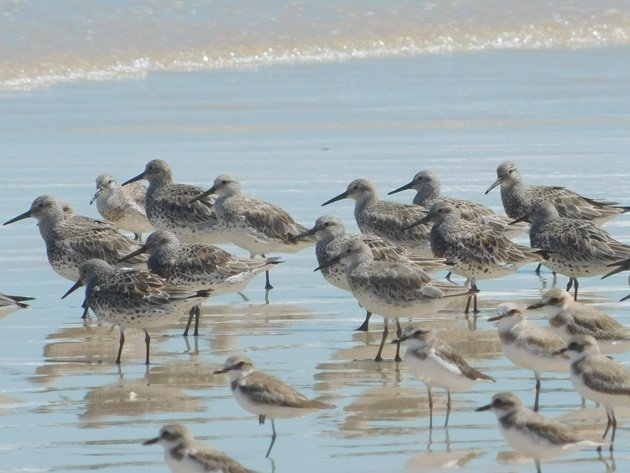
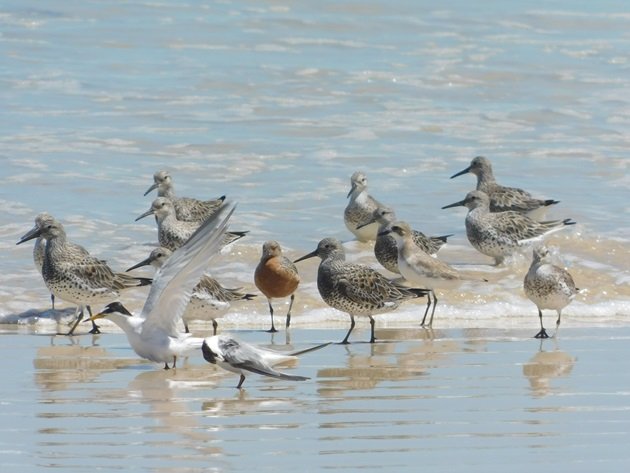
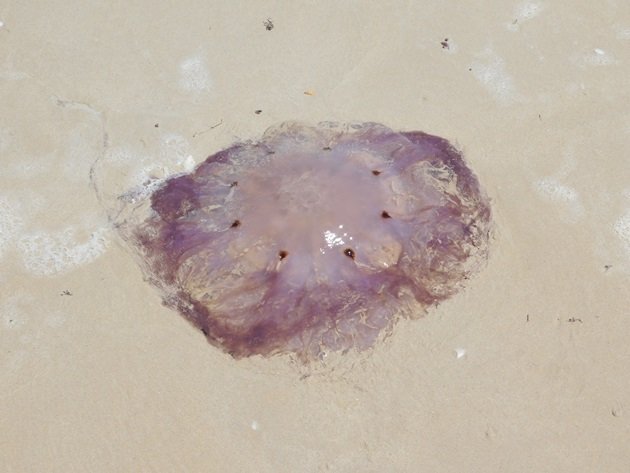










Leave a Comment